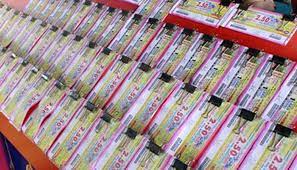CFD (Contract for Difference) trading offers traders a dynamic way to access global markets and seize opportunities in both rising and falling price movements. However, with great potential comes inherent risk. Successful CFD Trading isn’t just about riding market trends; it’s about effectively navigating uncertainty. That’s where risk management tools come into play. When used strategically, these tools can minimize losses and protect trading capital, even in volatile markets.
This article explores key risk management tools that traders can use to maintain control and trade smarter.
The Essential Role of Risk Management
Risk management is the foundation of successful trading. Without a plan or tools to mitigate risk, even the most profitable strategy can lead to significant losses. Essentially, risk management tools provide a safety net, allowing traders to balance profit potential against potential losses.
For CFD traders, these tools are particularly important due to the leveraged nature of trading, which can magnify both gains and losses. Let’s take a look at some of the most effective risk management tools traders can utilize.
Stop-Loss Orders
A stop-loss order is a critical tool in cfd trading. It allows traders to set a predetermined price at which a position will automatically close, minimizing losses.
For example, if you buy a CFD at $100, you can set a stop-loss order at $95. If the market price drops to $95, the position will automatically close, ensuring that you don’t incur further losses.
The key to using stop-loss orders effectively is placing them at an appropriate level. Setting them too close may result in frequent stop-outs, while setting them too far could lead to significant losses.
Take-Profit Orders
Take-profit orders are the counterpart to stop-loss orders. This tool automatically closes a position when it reaches a specific profit level.
If you enter a trade at $100 and your target profit is $110, you can set a take-profit order to exit the market once the price hits $110. This helps lock in gains without risking holding the position too long and potentially losing profits.
Both stop-loss and take-profit orders ensure disciplined trading, eliminating emotional decision-making.
Position Sizing
Position sizing is another crucial aspect of risk management in CFD trading. This involves determining the size of your position based on your overall trading capital and risk tolerance.
For instance, a common approach is to risk only 1-2% of your capital on a single trade. If you have $10,000 in trading funds, this means risking no more than $100-$200 per trade.
By carefully managing position sizes, traders can trade confidently without risking too much of their portfolio on a single trade.
Diversification
Diversification is not just for long-term investors—it’s equally valuable for CFD traders. Invest in CFDs across different asset classes (such as stocks, currencies, commodities, and indices) instead of concentrating all capital in one type of market.
By diversifying holdings, you reduce the risk of being heavily impacted by adverse price movements in a single market.
Monitoring Volatility
Understanding market volatility is key to effective risk management. High volatility often means greater price swings, which can present both opportunities and risks. Monitoring tools like volatility indices or historical price data can help traders anticipate possible market movements and adjust their risk strategies accordingly.
Volatility monitoring also helps determine the best placement for stop-loss and take-profit orders.
Trade Smarter, Not Harder
By combining these risk management tools, CFD traders can protect their capital while still participating in the dynamic world of financial markets. Each tool serves as an additional layer of protection and discipline, ensuring that losses are controlled and profits are optimized.
Effective trading isn’t only about predicting market movements—it’s about controlling the risks that inevitably come with every trade. Use these tools wisely and consistently, and you’ll put yourself in a better position to achieve trading success.
How to Use Risk Management Tools in CFD Trading
Categories:


